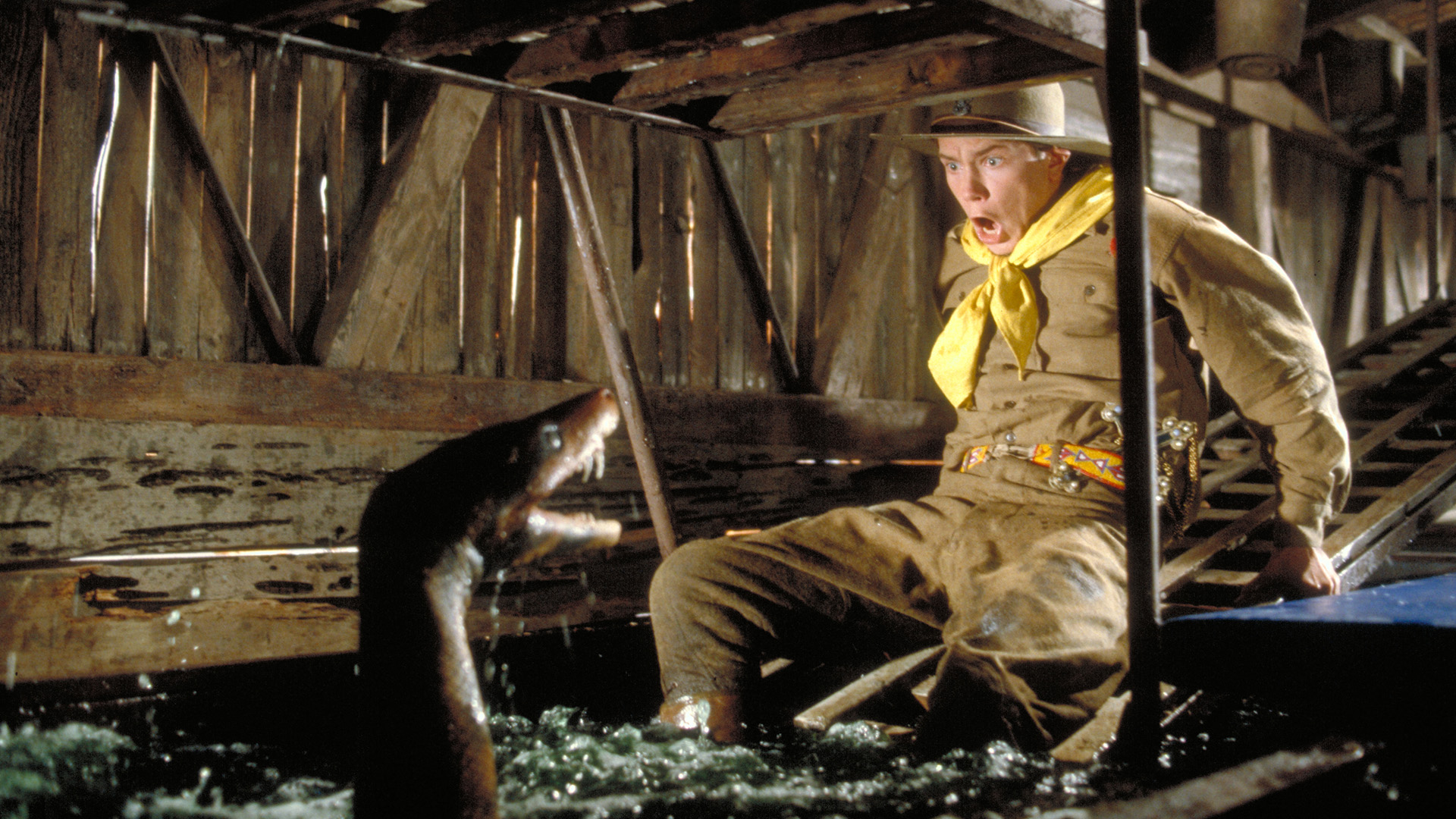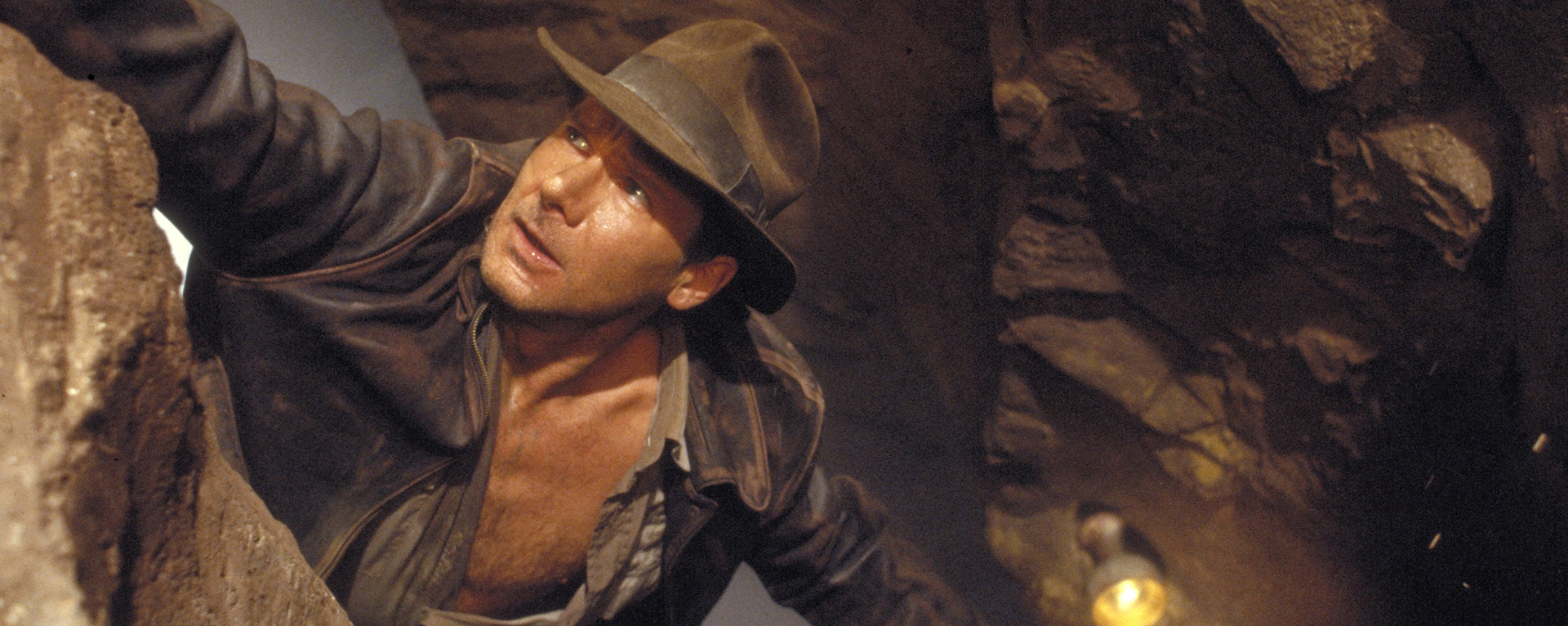The Real Indiana Jones: Fear & Humility
Some fears are on the surface while others run much deeper.
“The Real Indiana Jones” is a series that explores the man behind the fedora. Indiana Jones is many things to many people in his world, from a friend or enemy, to an esteemed professor or rival treasure hunter. As viewers of Indy’s big screen and television adventures, we have a unique perspective on the life of this hero, whose own weaknesses are often as important as his strengths.
Any discussion about Indiana Jones’ fears must begin with his aversion to snakes. All of us can be stopped in our tracks by seemingly innocuous things. A fear of snakes isn’t entirely irrational, of course, especially if you happen to meet a venomous cobra in an Egyptian tomb. But Indy more easily overcomes equally scary or deadly obstacles (think insects, rats, and so forth). Nothing can stop Indiana Jones – boulders, tanks, hordes of soldiers – but show him a friendly, nonpoisonous snake and he’s a goner.
As we see in the opening of Indiana Jones and the Last Crusade, a teenaged-Indy idly moves a snake aside as if it weren’t a nuisance at all. Only moments later aboard a circus train, he falls into a tub full of the slithering reptiles and is henceforth afflicted with this all-too-human foible (though never used in the series, the clinical term is “ophidiophobia”). Over the course of our lives, we pick up psychological baggage that we each carry in a unique assortment. Indy’s fear of snakes is a poignant, humorous element that stretches back decades to his adolescence. Other fears and insecurities go back even further and motivate the hero in much deeper ways.

It’s no secret that Indy’s relationship with his father was complicated from the start. During their world travels as seen in The Adventures of Young Indiana Jones, the pair struggle to connect in a meaningful way and often get on each other’s nerves. Henry Jones, Sr. seems not entirely comfortable with fatherhood and struggles to balance his academic passions with his investment in his son’s life. From his youthful days, Indy can make friends with almost anyone in any place. By contrast he is intimidated by his father, who provides few openings for emotional connection.
During their trip to Russia, Indy and Henry reach a boiling point as the former repeatedly gets himself into trouble, much to the embarrassment of the latter. As tensions run high, Indy decides he’s had enough and runs away. Though he safely makes it back to his family after a harrowing adventure (including a run-in with famed writer Leo Tolstoy), this becomes a common decision for Indy in the years to come.
When faced with an insurmountable problem – not one involving booby traps, historical mysteries, or nefarious antagonists, but rather those involving human relationships and psychological trauma – he skips town. He might retreat back to the quietness of his academic work or race out into the world in pursuit of treasure. Perhaps the most heart-wrenching example is his relationship with Marion Ravenwood. Though never explicitly detailed, it’s implied that Indy ran away from a commitment to the love of his life on more than one occasion, what Marion piercingly describes as his “leaving behind a trail of human wreckage” in Indiana Jones and the Kingdom of the Crystal Skull.

In Young Indiana Jones, Indy runs away to join the Mexican Revolution at 16 and ultimately spends more than two years fighting in World War I. There’s an important element of the “call to adventure,” of course, but there’s also an individual searching for something, if only he could figure out what it is. “You left just when you were becoming interesting,” Henry, Sr. tells his son in The Last Crusade. And perhaps the ultimate fulfillment Indy doesn’t realize he’s seeking is described by the father himself: “Illumination.”
Being open to our fears and trying to understand them is certainly an element of the path to illumination. Perhaps what Henry, Sr. is getting at when he uses the term outside the Grail Temple is a kind of enlightenment. After going all the way to the brink and beyond to find the Holy Grail, the Joneses must let it go. In the presence of great material treasure, they understand that what they truly value is their own relationship. It’s a kind of humility, one that must be learned.
During one perilous journey during World War I, Indy and his troop are all but decimated by malaria as they cross the heart of the Congo. Rescued by the German doctor and humanitarian Albert Schweitzer at his riverside hospital, a foolhardy and delirious Indy refuses help, convinced the doctor is his enemy. Instead, Schweitzer nurses him back to health. Indy witnesses the doctor’s commitment to helping the African people, and his self-described “reverence for life.” For Schweitzer, “good is whatever promotes life, evil is whatever destroys it. From there you make your own decisions.”
This experience reverberates with Indy for the rest of his life, as he learns to temper his zeal in the face of the needs of others.

Watch Indy’s past adventures — the original four films and The Adventures of Young Indiana Jones TV series — on Disney+. Indiana Jones and the Dial of Destiny arrives in theaters on June 30.
—

